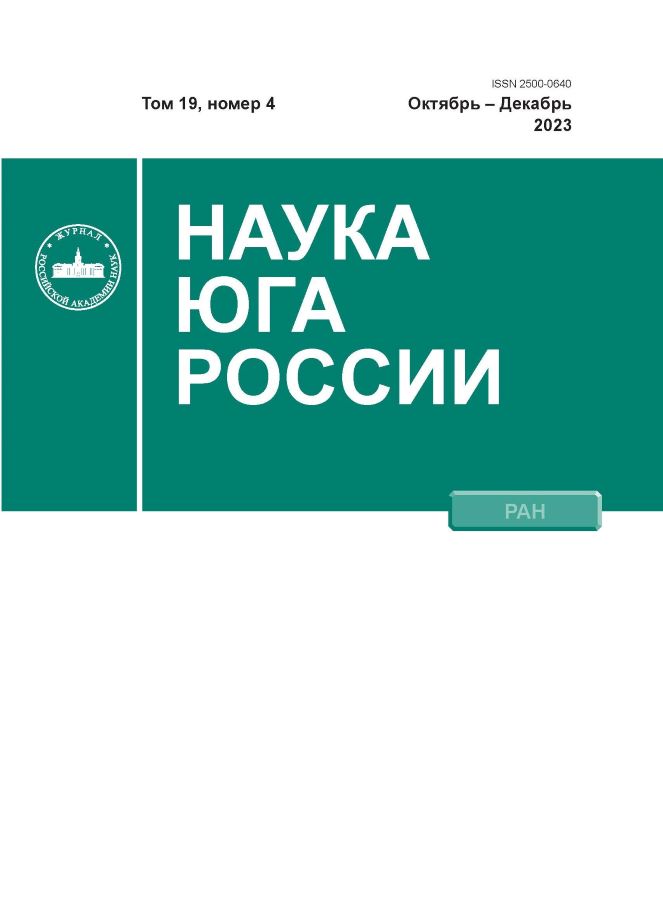Перспективы Аральского Региона (Республика Кзахстан) на Литиевое Гидроминеральное Сырье
- Авторы: Парада С.Г1, Маркин М.Ю2, Гамбург К.Ю1
-
Учреждения:
- Федеральный Исследовательский Центр Южный Научный Центр Российской Академии Наук
- Товарищество с Ограниченной Ответственностью «ГеоСтройСистема»
- Выпуск: Том 19, № 4 (2023)
- Страницы: 42-51
- Раздел: Статьи
- URL: https://journals.eco-vector.com/2500-0640/article/view/628058
- DOI: https://doi.org/10.7868/S25000640230404
- ID: 628058
Цитировать
Полный текст
Аннотация
Статья посвящена оценке аральского региона Республики Казахстан на наличие литиевого гидроминерального сырья (ЛГМС) на основе критериев и признаков, установленных путем анализа литературных данных по регионам с крупными ресурсами ЛГМС. Аральский регион представляет собой тектоническую депрессию, занимаемую в различное время водами Аральского моря. Впервые обращено внимание на проявление гигантской тепловой аномалии, захватывающей всю депрессию, как отражение восходящих эндогенных потоков энергии и вещества. Эти потоки могли привносить в бассейн седиментации литий и другие ценные элементы, которые при испарении накапливались в галогенных отложениях. В отношении ЛГМС интерес представляют верхнеплиоценовые и голоценовые слои. В первых до глубины 500 м отмечаются перспективные на ЛГМС толщи соли суммарной мощностью 85 м. Для голоценовой стадии развития Аральского моря характерны резкие колебания его уровня и солености. В регрессивные эпохи, совпадавшие с жаркими аридными условиями и, скорее всего, с активизацией теплового потока, уровень Арала резко падал. Море мелело и разбивалось на отдельные заполненные высокоминерализованными водами озера. Состав регрессивных осадков преимущественно песчано-алевритовый и хемогенный (гипс, мирабилит и др.). В Малом Аральском море накапливались хемогенные отложения, а на побережьях существовали солончаковые ландшафты. Приведены расчеты возможных концентраций растворенных форм лития в морской воде (порядка 15 мг/л) по состоянию на 1967 г. (до начала современного обмеления Арала). С тех пор уровень моря понизился более чем на 16 м. При этом на обнажившемся дне моря скопились миллиарды тонн солей различных металлов, включая литий. Все эти соли, проникая в поровые и грунтовые воды, могли обогащать их, образуя в районе дна бывшего моря рапу, содержащую высокие концентрации солей редких металлов, в том числе лития.
Об авторах
С. Г Парада
Федеральный Исследовательский Центр Южный Научный Центр Российской Академии Наук
Email: maurmar@yandex.ru
Ростов-на-Дону, Российская Федерация
М. Ю Маркин
Товарищество с Ограниченной Ответственностью «ГеоСтройСистема»
Email: markin_maxim@inbox.ru
Алматы, Алатауский Район, Микрорайон Саялы, Республика Казахстан
К. Ю Гамбург
Федеральный Исследовательский Центр Южный Научный Центр Российской Академии НаукРостов-на-Дону, Российская Федерация
Список литературы
- В мире развернулась борьба за литий. Кто перехватит контроль над важнейшим ресурсом экономики будущего? 2023. LENTA.RU. URL: https://lenta.ru/articles/2023/04/15/lit/?ysclid=liir6k67ds218418486 (дата обращения: 06.06.2023).
- Иевлев П. Литий – легкий белый металл, который критически важен для нескольких ключевых современных отраслей. Откуда он берется, кому принадлежит, и хватит ли его всем желающим? Бизнес. Цифровой океан. РФ. URL: https://business.digitalocean.ru/n/belaya-neft (дата обращения: 12.10.2023).
- Обзор рынка лития: динамика, цены, производители. 2022. Инжиниринговый химико-технологический центр. URL: https://ect-center.com/blog/lithium-market-2021 (дата обращения: 10.03.2023).
- Кудрявцев П.Г., Кудрявцев Н.П. 2018. Литий: ресурсы, добыча и перспективы развития мирового рынка. Альтернативная энергетика и экология. 10–12: 70–81. doi: 10.15518/isjaee.2018.10-12.070-081
- Рябцев А.Д. 2004. Гидроминеральное сырьё ‒ неисчерпаемый источник лития в XXI веке. Известия Томского политехнического университета. 307(7): 64–70.
- Волкова Н.И., Владимиров А.Г., Исупов В.П., Мороз Е.Н. 2012. Литиевые соляные озера Южной Америки и Центральной Азии. Химия в интересах устойчивого развития. 20(1): 21–26.
- Карта геотермического режима земной коры территории СССР. 1978. М., Аэрогеология: 1 л. цв., 60 × 95 см.
- Хрусталев Ю.П., Резников С.А., Туровский Д.С. 1977. Литология и геохимия донных осадков Аральского моря. Ростов н/Д, изд-во РГУ: 159 с.
- Хрусталев Ю.П., Резников С.А., Чернышев С.Я. 1975. Литий, рубидий и цезий в донных осадках Аральского моря. Доклады АН СССР. 222(1): 231–234.
- Батурин Г.Н., Завьялов П.О., Фридрих Я. 2015. Геохимия осадков современного Аральского бассейна. Океанология. 55(2): 280–290. doi: 10.7868/S0030157415020021
- Рубанов И.В., Ишниязов Д.П., Баскакова М.А, Чистяков П.А. 1987. Геология Аральского моря. Ташкент, Фан: 247 с.
- Рубанов И.В. 1980. Геологические и исторические свидетельства колебания уровня Арала. В кн.: Колебания увлажненности Арало-Каспийского региона в голоцене. М., Наука: 204‒209.
- Вишняков А.С. 1978. Геология подземных вод неогеновых отложений равнинных территорий Узбекистана. Ташкент, Фан: 115 с.
- Пинхасов Б.И. 1984. Неоген-четвертичные отложения и новейшая тектоника Южного Приаралья и Западных Кызылкумов. Ташкент, Фан: 115 с.
- Маев Е.Г., Маева С.А. 1983. Разрез донных отложений центральной части Аральского моря. В кн.: Палеогеография Каспийского и Аральского морей в кайнозое (Материалы совещания в Московском университете в январе 1982 г.). Часть 2. М., изд-во Московского университета: 133–143.
- Николаев С.Д. 1995. Изотопная палеогеография внутриконтинентальных морей. М., ВНИРО: 125 с.
- Вронский В.А. 1975. Голоценовая история Аральского моря по палинологическим данным. В кн.: IV Всесоюзный симпозиум по истории озер: тезисы докладов. Том 4: История озер и внутренних морей аридной зоны. Л.: 64–68.
- Вайнбергс И.Г., Ульст В.Г., Розе В.К. 1972. О древних береговых линиях и колебаниях уровня Аральского моря. Вопросы четвертичной геологии. 8: 69–89.
- Андрулионис Н.Ю., Завьялов П.О., Ижицкий А.С. 2022. Современная эволюция солевого состава остаточных бассейнов Аральского моря. Океанология. 62(1): 41–58. doi: 10.31857/S0030157422010026
- Туремуратова А.Ш., Реймов К.Д., Алланиязов Д.О. 2022. Распределение солей в подземных водах и осушенной поверхности Аральского моря. Universum: химия и биология. 6(96). doi: 10.32743/UniChem.2022.96.6.13848
- Ковалев В.В., Парада С.Г. 2013. Геологические аспекты современных изменений уровня Каспийского моря. Вестник Южного научного центра. 9(2): 38–46.
- Кенжебаева С.С. 2015. Гидрогеологические условия территории нижнего течения реки Сырдарья в связи с орошением на сельскохозяйственных землях. Научно-исследовательские публикации. 1(3(23)): 52–62.
Дополнительные файлы









